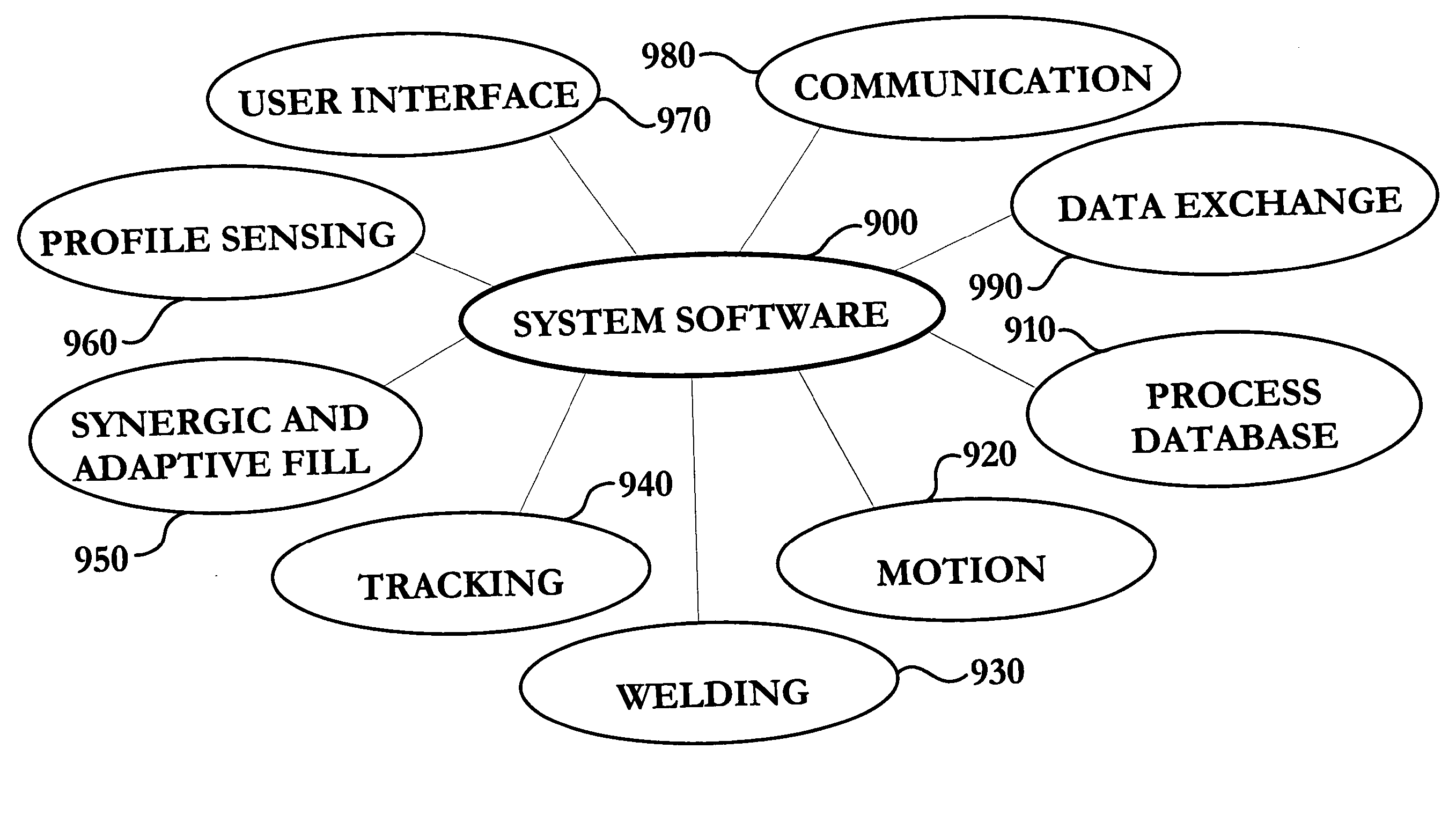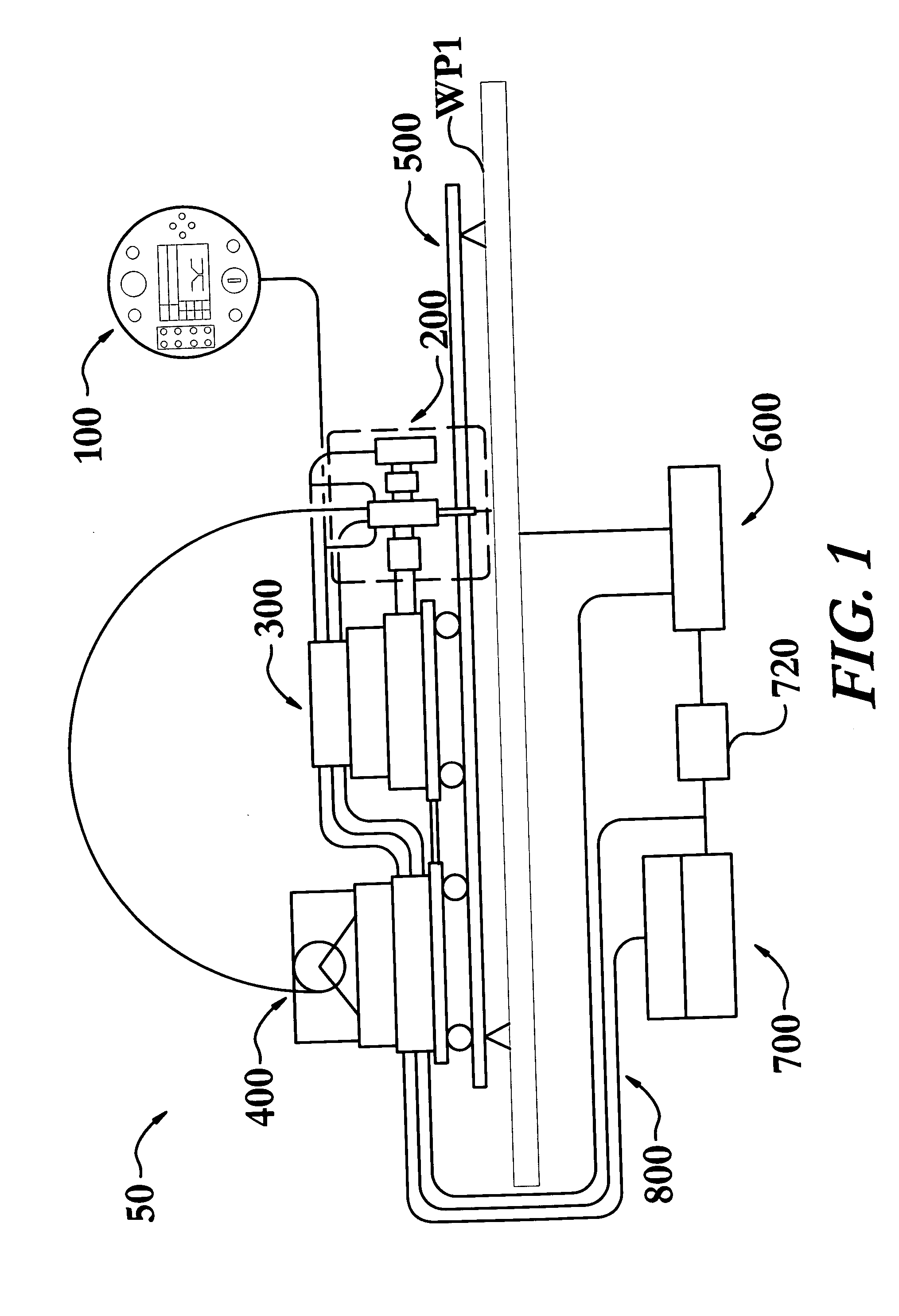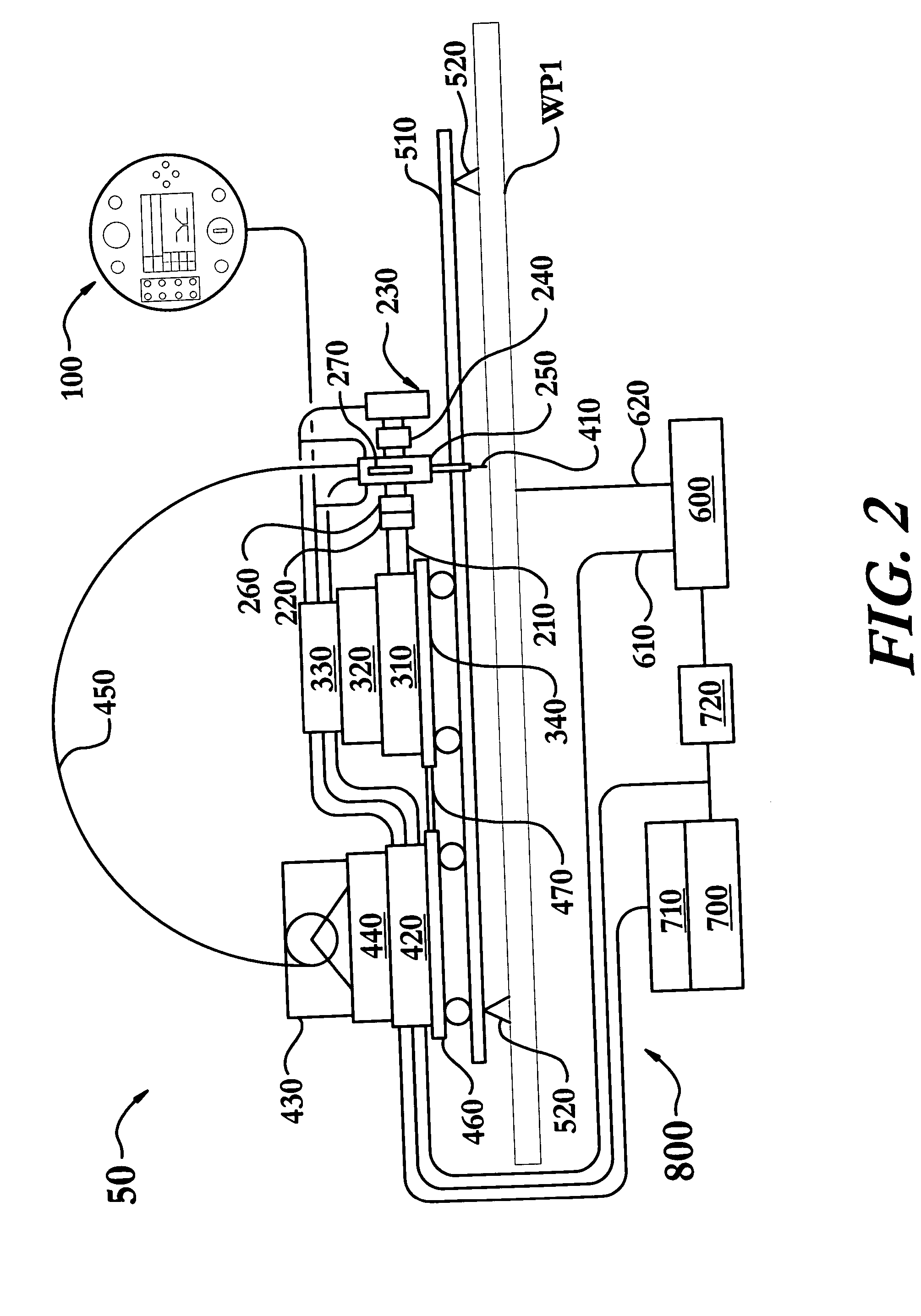[0010] In its most general configuration, the present invention advances the state of the art with a variety of new capabilities and overcomes many of the shortcomings of prior methods in new and novel ways. In its most general sense, the present invention overcomes the shortcomings and limitations of the prior art in any of a number of generally effective configurations. An object of the invention is to provide a low cost adaptive and synergic fill welding method and apparatus that produces welded joints having improved weld quality and allows real-time intervention by an operator during welding to easily influence a number of complex welding parameters. The instant invention demonstrates such capabilities and overcomes many of the shortcomings of prior methods in new and novel ways.
[0011] The adaptive and synergic fill welding apparatus is particularly suited for the joining of work pieces along a joint having a variable joint profile. The apparatus generally includes a means for profiling and tracking the joint, a means for welding the joint, a means for feeding a consumable
electrode to the welding means, a means for controlling the power to the welding means, a means for adjusting the location of the profiling and tracking means and the welding means, a means for adjusting the rotation of the welding means, a means for moving multiple elements of the apparatus, a portable means for
user input and display, a means for controlling various elements of the apparatus, and a means for communicating a plurality of input and output commands, and power among the various means of this apparatus. These means work in conjunction to provide improved fusion quality, in part by ensuring that the
base metal dilution of a weld remains within a predetermined range.
[0014] In a typical configuration, the joint profile and
tracking system leads the
welding torch in the direction of travel by a predetermined lead distance thereby acquiring information about an upcoming section of the joint. A joint profile and
tracking system position adjuster may be introduced to improve the flexibility with which the joint profile and
tracking system leads the welding means, or
welding torch, thereby adjusting the lead distance. Various applications, and welding speeds, may require the joint profile and tracking
system to lead the welding means by varying lead distances.
[0034] While the adaptive fill mode is
fully automated and does not permit user influence, the synergic fill mode permits the user to influence the welding operation during welding. The synergic fill regulation device, on the pendent, allows the user to influence the automatic welding of the apparatus. More specifically, the synergic fill regulation device permits the user to change the synergic fill number. Consequently, the size of the
weld bead may be systematically set and varied with the application of different synergic fill numbers. Therefore, the concept of changing the synergic fill number and thereby changing a plurality of optimized parameters, herein referred to as synergic fill welding, not only maximizes the use of optimized welding parameters but also avoids the manual individual adjustments of a multitude of welding parameters by a user to vary the size of the
weld bead having no control on the weld quality. Additionally, a manual mode provides the operator the option of controlling all of the welding parameters from the single location of the
user interface pendent. This option of
single point manual control provides the operator with great flexibility and convenience.
[0035] Referring back to the various
software modules, the joint profile module of the instant embodiment constantly communicates with the base
system software residing in the joint profile and tracking
system via an RS-422
serial port to exchange data and commands. In this particular, embodiment the base
software is responsible for setting up specific joint characteristics such as the joint type, base
metal preparations, and certain sensor characteristics like
image acquisition rate. One with skill in the art will appreciate that this module, and for that matter any module herein, may reside virtually anywhere in the apparatus, and is not limited to residing in the joint profile and tracking system. This module accesses the joint profile and tracking system to gather and
process information about the joint geometry, derive
tracking data, calculate the area and
area change of an unfilled joint groove, turns the joint profile and tracking system on and off and accepts position data of the
welding torch. The
user interface module of the instant embodiment may be embedded to the user interface pendent for interacting with the user via any of the user interface devices. Further, the module may translate and dispatch commands issued by the user via an RS-422
serial port after analysis of the status of the various user interface devices of the pendent. The communication module of the instant embodiment is implemented between the
system controller and the pendent, and between the
system controller and the joint profile and tracking
system controller, via two RS-422 serial ports in order to achieve fast and reliable
data exchange. The communication of the
system software with the pendent is activated by channel build-up software, which is developed using multithreads approach to meet the requirement of random talking.
 Login to View More
Login to View More 


